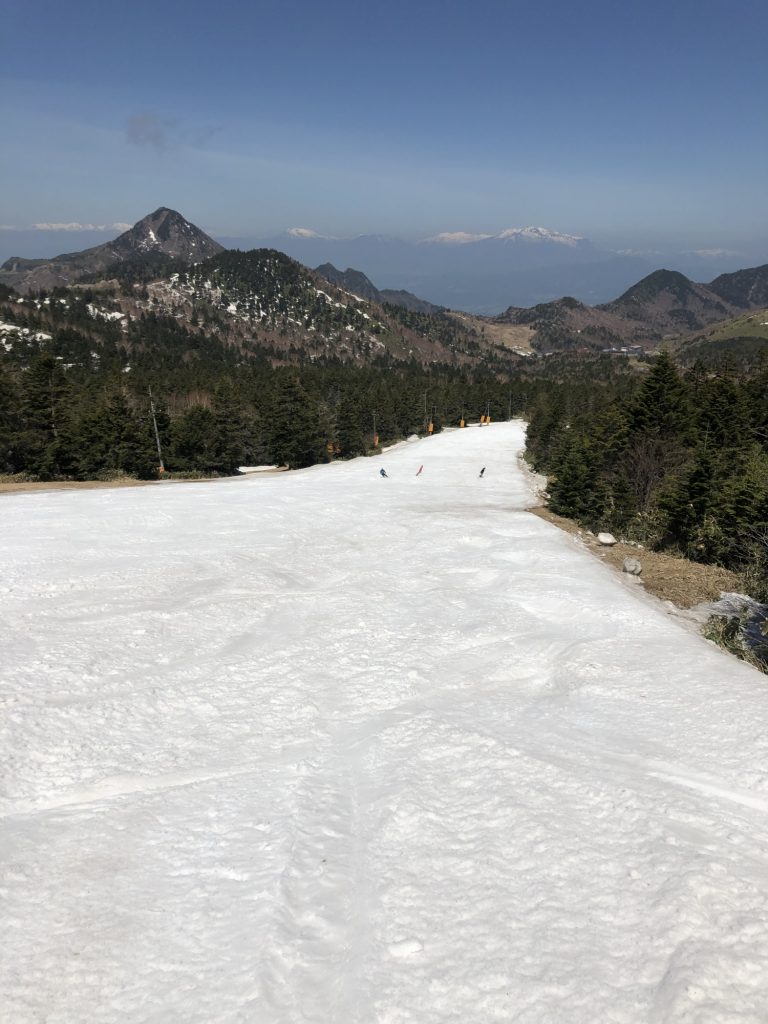Changing Eras

2019: Changing Eras
In my previous article I mentioned the changing of ‘era’ here in Japan as well as snowfall being in rather short supply from the middle of February and wondering just how long the ski season would last.
Now that the season has pretty much ended in all but a few ski hills in Japan, it’s interesting to look back and see how the last part of the season panned out. And it was kind of odd in some places… but in a good way.

The last part of March and into early April ended up giving us a run of unseasonably cold conditions and there was even some unexpected decent snowfall in early April. It always feels like an exciting bonus to get some fresh that late in the season; even if the fresh only lasts short time. In the end though with the colder conditions prevailing ski hills around Japan were mostly able to remain open until their planned closing dates, and some managed to boast impressive amounts of snow remaining on their upper slopes with better snow cover than last year.

As I write this it is the middle of May and there are now just a few ski hills in Japan that remain part open. The main area of the Kagura resort in Yuzawa town (Niigata Prefecture) will be open until 26th May, and Shibutoge (the highest part of Shiga Kogen in Nagano Prefecture) will also probably last about the same. At both, the skiing and boarding is limited to a few runs and the remaining snow is far from being pure white and fluffy, but it’s a last chance to get some riding in before the heat of the summer takes over. Every season there seems to be quite a few people out there enjoying it right until the last lifts close.

Gassan in Yamagata Prefecture (which I mentioned in detail in my article here last year) is also now open for the summer season and all being well that area will be able to keep open until the end of July.
Going back to talk of eras. You might have seen it on the news… 30th April 2019 was the last day of the Heisei era and 1st May 2019 was the first day of the Reiwa era as Emperor Akihito abdicated and his son Naruhito became the new Emperor of Japan. For those who like little factoids that means that the year 2019 is both part of the Heisei and eras – Heisei 31 and Reiwa 1. Reiwa is interpreted as ‘beautiful harmony’, so let’s hope there’s a lot of that going around!
The Heisei era began in 1989. In that year the Nikkei stock average hit an all-time high, but the economic bubble was destined to burst soon after. A lot of incredible stuff was going during the late 80s in Japan. It was the ‘ski boom’ period when skiing in Japan was enjoying massive popularity – it was both the thing to do and the thing to be seen doing, and sometimes the queues for ski lifts were the stuff of nightmares! Huge amounts of money were being seemingly thrown at ambitious ski resort facilities; some of which appeared and others that remained on the drawing board. (Some of the eye-popping plans that didn’t end up being constructed make for fun drinking party discussions!)
Once the economic bubble burst, skiing started to lose some of its appeal and became out of reach for some, but snowboarding appeared in the early 90’s to help out. Initially snowboarding encountered resistance at many ski hills in Japan and it was only allowed at a select few. Throughout the 90s, snowboarding quickly increased in popularity and before too long it was allowed pretty much everywhere. Even now there are still some ski resorts in Japan that remain ‘skiers-only’, but snowboarding is now more prevalent than skiing at certain resorts and remains mainstream popular.
The latter part of the Heisei era saw a noticeable increasing in the number of foreigners visiting Japan to ski and snowboard and the new ‘inbound’ market has been growing every year. Well-known places like Niseko, Hakuba and Nozawa now have a rather ‘international’ feel – to varying degrees – and many foreign faces can be seen on their slopes. Other ski resorts are making efforts to try and cope with guests who cannot speak Japanese, but it is often a slow process. There are hundreds of ski hills dotted across the Japanese mountains and most of them remain relatively unknown and undiscovered. Which means that there’s a lot of hidden gems out there waiting to be discovered!
I have the feeling that the Reiwa era will see the inbound market further growing and the names of more Japanese ski resorts will become well-known with skiers and snowboarders around the world.




